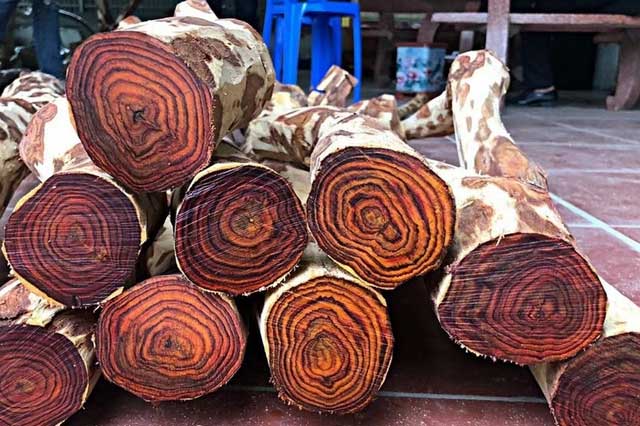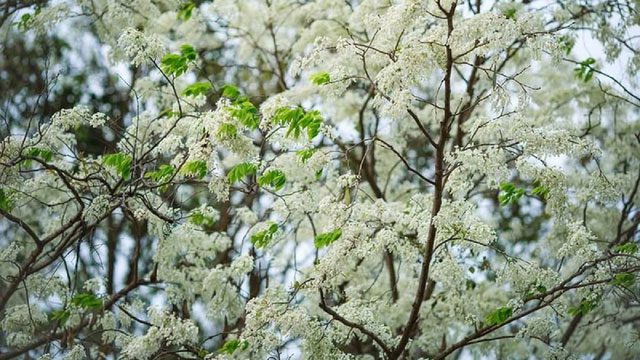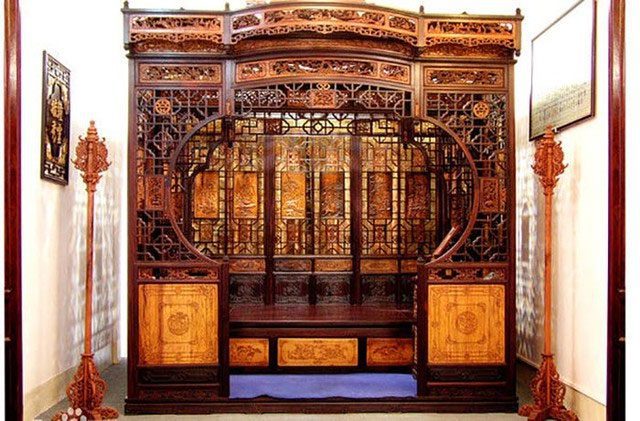During the “fever” period, this type of wood could reach prices of up to hundreds of billions of VND. This is the precious wood known as Sưa.
What kind of wood is Sưa that commands such high prices?
The Wood Considered “Gold in the Rough”
According to People’s Newspaper, Sưa, scientifically known as Dalbergia tonkinensis Prain, is a rare species classified as Group IA under the Government’s decree regarding the management of endangered and rare forest plants and animals. This wood is strictly prohibited by the State from being exploited and used for commercial purposes. Sưa is also known by other names such as Trắc Thối, Huỳnh Đàn, and Huê Mộc Vàng.

Sưa is a rare wood. (Photo: Sưa Wood).
Sưa is a medium-sized deciduous tree, reaching heights of 6-12m (and up to 15m), with average growth rates. The tree has a cylindrical form with a spreading shape. The bark is yellow-brown or gray, often splitting vertically. Young branches are green and sparsely covered with fine hairs. Leaves are arranged alternately, consisting of compound pinnate leaves, with each compound leaf having 9-17 leaflets attached in an alternate fashion on the main stalk. Leaflets are elongated oval in shape, with pointed tips or acute ends, rounded bases, and the underside is often pale white. Leaflet sizes range from 6–9 cm in length and 3–5 cm in width, with the leaf attached at the end of the compound stalk typically larger than the others. Both the main stalk and leaf stalks are hairless, and the leaflets are also hairless, with small hairless stipules that fall off early.
Flowers emerge from the leaf axils, often appearing before the leaves are fully developed. The inflorescences are numerous and white, measuring 7-9mm, with a light fragrance. The flowering season is from February to March. The fruit is a pod-shaped elongated legume, measuring 5–7.5 cm long and about 2-2.5 cm wide. Each fruit contains 1-2 seeds, each about 8-9mm in diameter, with a flat kidney shape. The fruits do not split open when ripe.
Sưa prefers sunlight and thrives in deep, rich, and moist soils. It is found at altitudes below 500m. In the wild, Sưa grows in tropical rainforests and monsoon rainforests, primarily distributed in Vietnam, but also found in Hainan, China.
Sưa wood has an alluring, subtle scent reminiscent of incense. When burned, the ash is opaque white with an unpleasant smell, hence the name Trắc Thối. Only the heartwood of trees over a hundred years old is used, which features a fine texture, is both hard and flexible, and exhibits beautiful patterns.
In an interview with Youth Newspaper, Dr. Lê Bá Toàn, head of the Forestry Department at Ho Chi Minh City University of Agriculture and Forestry, noted that there are two main species of Sưa: white Sưa and red Sưa, alongside yellow Sưa.
The names red and white Sưa are based on the color of the flowers and the color of the wood core. White Sưa (also known as Thàn Mát) produces pure white flowers that emit a fresh fragrance, with larger fruits and no odor when burned. Red Sưa has a rougher bark than white Sưa, with fruits that grow in clusters and emit an unpleasant smell when burned, thus red Sưa is also referred to as Trắc Thối. Gardeners distinguish between these two species by observing the leaves: white Sưa has two leaves growing opposite each other, while red Sưa has leaves that alternate. Red Sưa wood is valued more highly than white Sưa.

White Sưa flowers. (Photo: Ha Giang Newspaper).
Red Sưa wood is a rare and valuable type of wood, often used for making furniture, fragrances, and medicinal materials.
During an interview with People’s Newspaper, Professor Dr. Phạm Bình Quyền from the Center for Natural Resources and Environment (National University of Hanoi) shared that Sưa is not a difficult species to propagate, but it has a long growth life cycle: it takes 60 years to reach maturity. The tree only grows less than 0.5 cm in diameter per year.
Sưa wood is a precious type of wood, which does not crack or deform after drying and is resistant to termites, making it highly sought after in the markets of China and South Korea.
In China, Sưa wood is referred to as Huanghua Li wood. For a long time, the Chinese have regarded Sưa wood as one of the four most precious types of wood, which include Zi Dan, Huanghua Li, Ke Si, and Tie Li.

During the feudal era, Sưa wood was used to make royal palace items. (Photo: Sưa Wood)
In a book from the Tang Dynasty (618 – 907), it is recorded that: “Huanghua Li wood is found in An Nam and Hainan Island. When making beds and cabinets, Huanghua Li is quite similar to Zi Dan but harder and more alluring.” During the Ming Dynasty, Huanghua Li wood was used to make thrones, everyday items, tables, chairs, as well as beds and cabinets for emperors and noble families.
<pAccording to Dân trí, the Sưa tree is likened to “gold in the rough” by locals due to its exorbitant price. Each Sưa tree aged 20 years or more can be worth tens of billions VND, and for ancient trees, the price can reach hundreds of billions. Many wealthy individuals are willing to bring bags of money to acquire this special wood.
Other Values of Sưa Wood
Some Chinese books such as “Encyclopedia of Traditional Chinese Medicine” and “Compendium of Materia Medica” have evaluated Sưa wood to have excellent medicinal properties including: hemostatic, analgesic, blood pressure reduction, intestinal diseases, air regulation, heart disease, and promoting blood circulation. The Chinese believe that having Sưa wood as a pillow is equivalent to medicine being directly administered to the body.

The Chinese believe that having Sưa wood as a pillow is equivalent to medicine being directly administered to the body. (Photo: Ha Giang Newspaper)
Assessing the value of Sưa wood, Dr. Nguyễn Tiến Hiệp, Director of the Vietnam Plant Conservation Center, believes that Sưa wood has significant economic value. While Sưa trees are rare in nature, they are becoming increasingly scarce and frequently targeted by thieves. In some areas, to protect the trees, people must keep watch and set up barbed wire. Recently, many localities in Vietnam are also experimenting with expanding the area to cultivate Sưa wood naturally.


















































